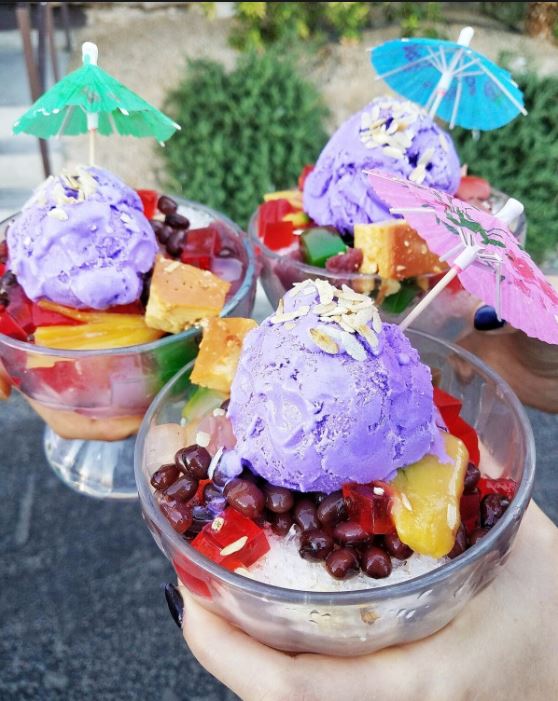Summer is coming, and the weather is getting warmer. For those who live in cooler climates, you may not feel the heat just yet but for those who live in the tropical climate, the scorching sun is already there. To cool down during the hot summer days, other than heading to the nearest air-conditioned shopping center or taking a dip in a pool, the locals in the tropical climate usually enjoy different kinds of ice-cold sweet treats. Today, let’s explore one of the most iconic desserts of the Philippines, Halo-halo.
Halo-halo literally means mix-mix which is not surprising how you eat this dessert. You mix up all of the ingredients in a bowl or cup and enjoy it while it’s still cold. Though Halo-halo is a popular dessert in the Philippines, its origin can be traced to pre-war Japan. This concoction was inspired by another Japanese dessert called Mitsumame. During summertime in Japan, the Japanese people often eat this dessert bowl which consists of shaved ice, chopped fresh fruits, sweetened beans, usually red or kidney beans, jelly cubes, and a variety of mochi such as dango or gyuhi. By the time the pre-war Japanese settlers and military personnels set foot on the Philippines islands, they brought mitsumame with them over and later sold this dessert to the inhabitants of the Metro Manila area.
According to different sources, Halo-halo was also inspired by another Japanese dessert called kakigori. Kakigori is a shaved-ice dessert topped with condensed milk and fruit-flavored syrups. By the time the locals got more familiar with ice cream and other frozen treats, during the hot summer days, everyone would love to have a delicious, ice-cold dessert of some kind. In other countries, for instance, Vietnam and Korea, the people also eat shaved-ice desserts to battle the scorching heat. In Vietnam, both adults and children love to eat shaved-ice or crushed-ice topped with fruity syrups. This dish is very similar to the infamous Hawaiian shave ice. In Korea, there is bingsu or bingsoo which is shaved-ice topped with condensed milk, fruit syrups, chopped fresh fruits, and most importantly, sweetened red bean paste. Through the above examples, we can see how much people from tropical climates love ice-cold desserts.

Back to the case of Halo-halo, after the Japanese left the Philippines, the locals adopted the original recipe of mitsumame and added some of their own unique twists. A typical glass of Halo-halo is often loaded with a melange of different ingredients. The first ingredient that goes into the glass is sugar palm seeds. These seeds come from tropical Southeast Asia’s sugar palm trees. The seeds are eaten as part of a sweet dish or eaten as is. Nowadays, sugar palm seeds can be found in supermarkets picked in a thick sugary syrup. Next, there goes macapuno, another specialty of Southeast Asian cuisine. Come behind macapuno are often a variety of candied tropical fruits such as jackfruit or plantain. On top of those delicious candied fruits is often a generous amount of agar jellies and firm coconut milk jelly. Come behind the jellies are sweetened beans. Now comes the best part. On top of the beans, there will be a big scoop of ice follows by a generous amount of evaporated milk. Lastly, a big chunk of flan and a big scoop of ube ice cream will sit side by side on top of the concoction. Some vendors will also add sweetcorns and young coconut on top. However, sweetcorns are more popular than young coconut since the Filippino also have a special love for sweetcorns.
Now as you know what Halo-halo is, try making it this summer to share with your friends and family. I bet both adults and children will love it.